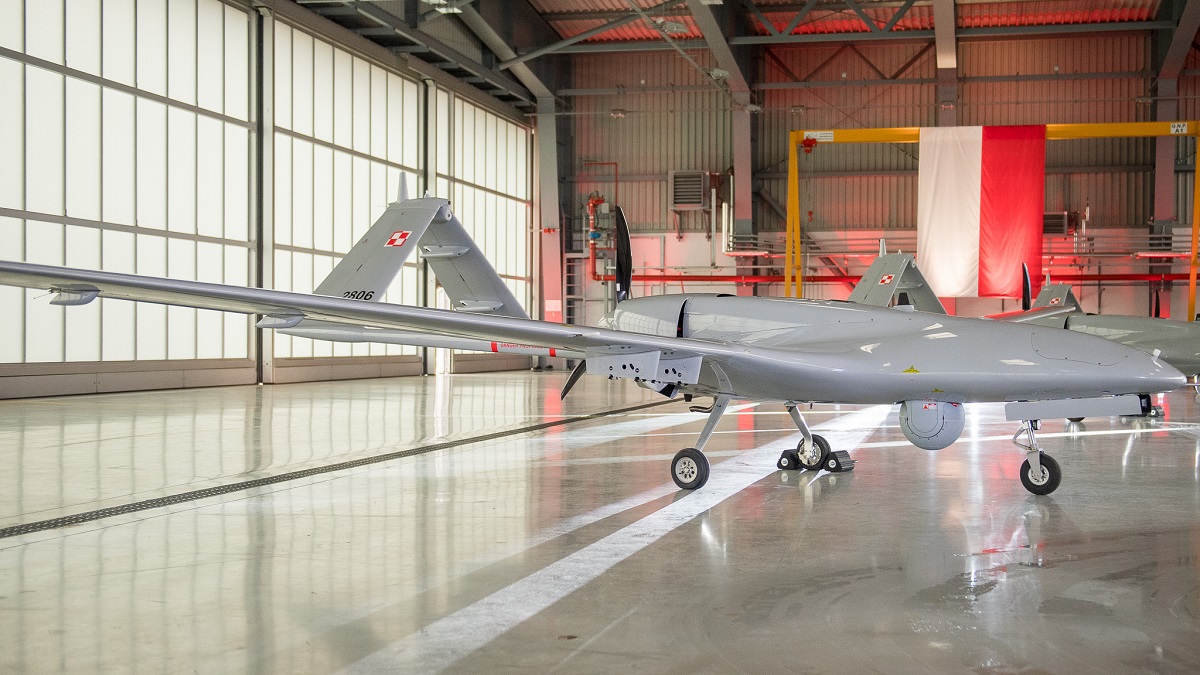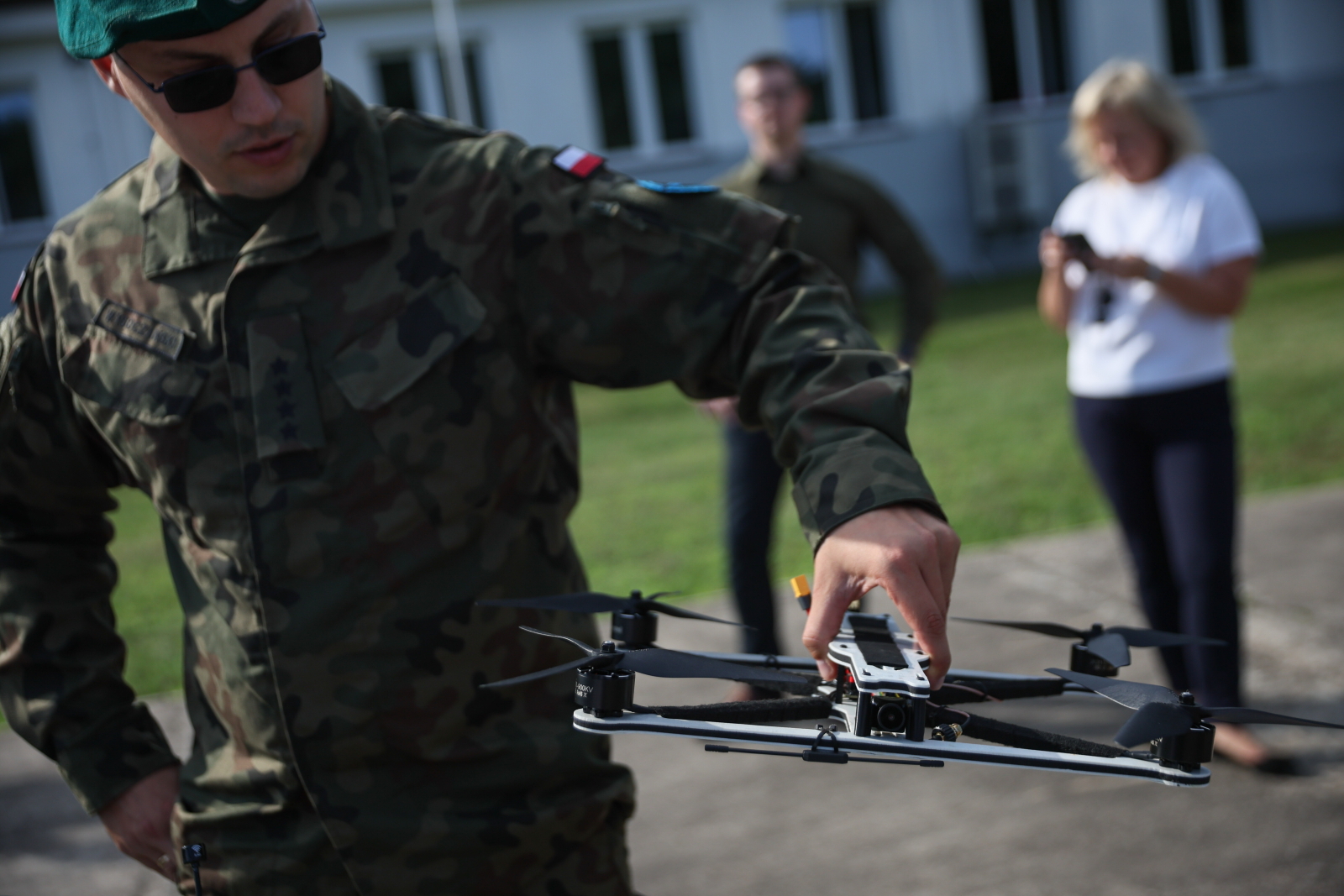Ukraine desperately needs them, but what about the Polish Army? We ask the general about the smallest drones.

- Gen. Mirosław Bodnar, who has been the inspector of unmanned forces since the beginning of the year, told the CIS that although the smallest flying drones are currently the most important in the Russian-Ukrainian war, this was not always the case.
- Larger drones like the Bayraktar TB2, which proved very useful at the beginning of the Russian invasion, are less important today, but the general believes they can still bring benefits to the military, even in peacetime.
- - A significant advantage of unmanned systems is that they constitute a response to demographic challenges - believes General Bodnar.
- The extent to which domestic manufacturers and suppliers are ready for this challenge will be discussed during the "Industry for Defense" conference. The event will take place on October 15 at the International Congress Center in Katowice.
On Wednesday, Prime Minister Donald Tusk participated in a presentation of unmanned combat systems at the Air Force Institute of Technology in Warsaw.
"Our security in the near future and beyond will depend primarily on what is born in our minds. Today, wars are won by smarter, better equipped, and technologically advanced forces. Forces that can utilize all the latest technological advancements in the world, whether it's artificial intelligence or drones," the head of government said .
What drones are most needed in Ukraine today?So what are the Polish Army's greatest needs in terms of unmanned systems? The WNP editorial team asked Brigadier General Mirosław Bodnar, Inspector of Unmanned Weapons Systems at the General Command of the Armed Forces, about this.
"If we look at what's being used in Ukraine, we could say that the greatest need is for micro- and small-scale unmanned aerial systems. These are the elements that are most commonly used, and we have the most information on their use," the general noted.
- However, I do not know whether this will be what will be needed in the near future, because the answer is usually the war and the nature of that war - he noted.
Reports from the front indicate that in the current phase of the Russian-Ukrainian war, a dominant role is played by small FPV (first-person view) multi-rotor aircraft. This term refers to drones with a small camera mounted on the front of the fuselage, providing the operator with a view as if they were flying the drone themselves. These aircraft can typically carry a small warhead or grenade, which they can use to incapacitate enemy personnel and vehicles while simultaneously being destroyed by the attack on the target.
In an interview with the CIS, General Bodnar noted that the military is preparing to purchase tens of thousands of such small drones for soldier training. " If we look at whether we have such capabilities today, then yes, we need to supplement them, " the general admitted.
He also noted that the full-scale Russian-Ukrainian war, which has been ongoing since February 2022, has had different phases. "If we look at the beginning, it wasn't a time when small drones were most important," he said.
What to do with the Bayraktars?In the first phase of the conflict, the Bayraktar TB2 drones, Turkish-built, were a triumph. They are 6.5 meters long, have a wingspan of 12 meters, and have a takeoff weight of up to 650 kilograms. In 2022, they were used by Ukrainians, for example, to attack Russian supply lines stretching between Kyiv and the Belarusian border. They played such a significant role that they entered pop culture, becoming the subject of songs, among other things.

However, as the war progressed, the front stabilized and the Russians tightened their air defenses, reports of successful Bayraktar use plummeted. Their relatively large size, combined with their low top speed (220 kilometers per hour), made them an easy target to take down. Meanwhile, in 2021, Poland signed a contract for the TB2, ordering four sets, each with six drones and ground control stations. Deliveries were completed in May 2024.
According to the drone inspector, Bayraktar TB2 can still bring benefits to the Polish Army.
"Regarding the beginning of the war (in 2022 - CIS note), they were used, and they are also very beneficial now from the point of view of using them in peacetime , because the TB2s we use are extremely helpful in securing situations such as floods, flood threats, or searches," said General Bodnar. He noted that machines of this class can have dual uses - both military and civilian.
Drones and demographicsThe general also said that a significant advantage of unmanned systems is that they are a response to the decreasing population size and, consequently, the number of soldiers that can be recruited.

- If we are to think about the fact that as few people as possible should die on the battlefield in order to remove this threat, we must think about unmanned systems that provide space for action at a distance safe for a soldier - he pointed out.
- I think this is one of the solutions that will allow us to somehow maintain the status quo in terms of the army's size and the use of the latest technologies available on the market - he added.
When the CIS pointed out that in the Russian-Ukrainian war, there is one operator for every FPV drone (the most widely used on the front in the current phase of the conflict), Bodnar admitted that this isn't a future-proof solution. "It's a matter of automation. At some point, the drone begins to move independently or perform tasks in accordance with its assigned goals (...). This requires the implementation of artificial intelligence," he explained.
"Of course, we're also talking about a swarm of unmanned systems, because that's also the future—a massive, massed strike, perhaps not with large payloads, but still challenging in some way. Adding to this the fact that they operate on different frequencies (communications - CIS note) or dynamically change frequencies also creates greater resilience in terms of the intended targets and the strike. There are many advantages that new technologies offer us today—it's just a matter of using them skillfully," said General Bodnar.
The Inspectorate of Unmanned Weapons Systems is part of the General Command of the Armed Forces. It was established at the beginning of the year.
wnp.pl




